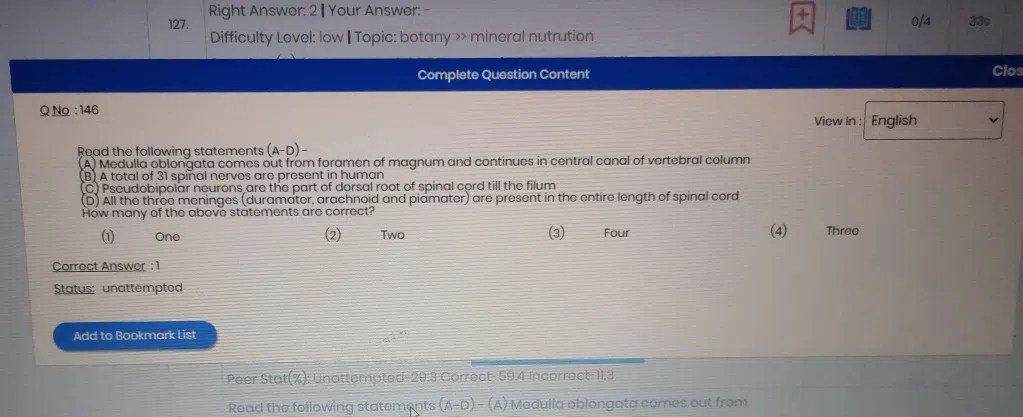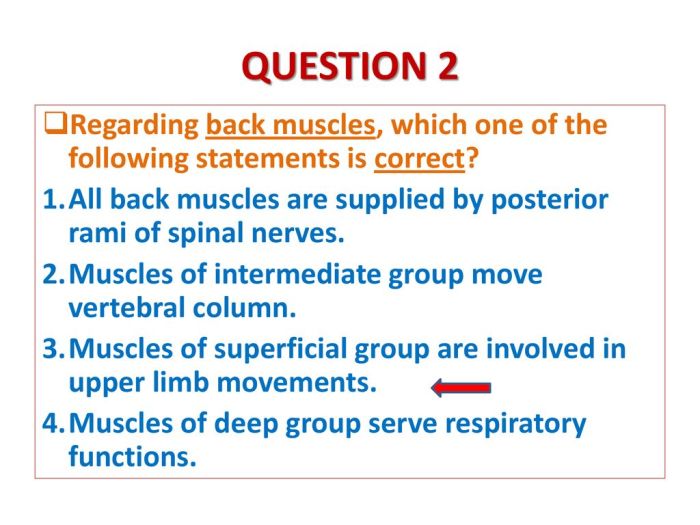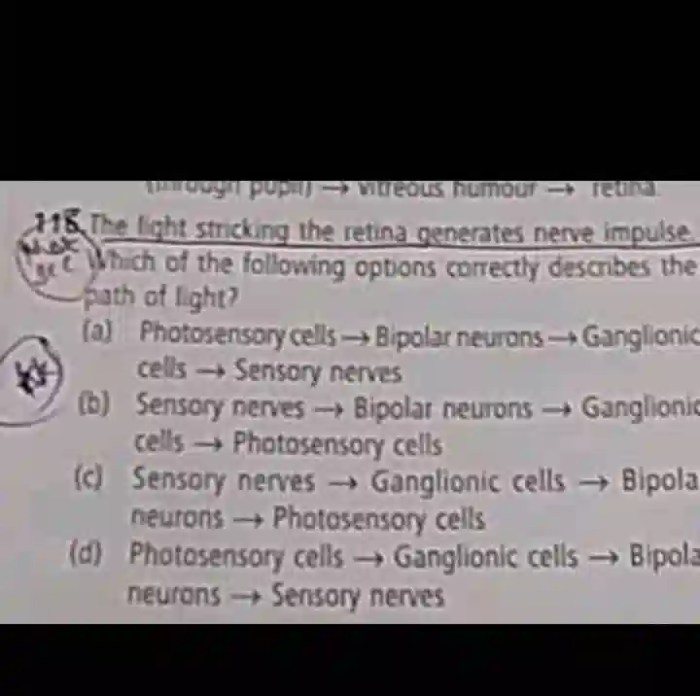Which of the following statements is correct about spinal nerves? Spinal nerves are essential components of the peripheral nervous system, responsible for transmitting sensory and motor information between the spinal cord and the rest of the body. Understanding their structure, function, and clinical significance is crucial for comprehending the intricate workings of the nervous system.
Spinal nerves originate from the spinal cord, carrying sensory information from the body to the central nervous system and motor commands from the brain to muscles and glands. They play a vital role in reflexes, which are rapid, automatic responses to stimuli that protect the body from harm.
Spinal Nerve Structure and Anatomy: Which Of The Following Statements Is Correct About Spinal Nerves

Spinal nerves are mixed nerves that transmit sensory and motor signals between the spinal cord and the rest of the body. They originate from the spinal cord and travel through the intervertebral foramina to innervate specific regions of the body.
General Structure of a Spinal Nerve
Each spinal nerve consists of a dorsal root and a ventral root. The dorsal root contains sensory neurons that transmit sensory information from the periphery to the spinal cord. The ventral root contains motor neurons that transmit motor signals from the spinal cord to muscles and glands.
Dorsal Root Ganglion, Which of the following statements is correct about spinal nerves
The dorsal root ganglion is a swelling on the dorsal root that contains the cell bodies of the sensory neurons. These neurons have peripheral processes that extend to sensory receptors in the periphery and central processes that extend into the spinal cord.
Role of the Spinal Cord
The spinal cord serves as a relay center for spinal nerves. Sensory information from the periphery is transmitted to the spinal cord via the dorsal root ganglia, and motor signals from the brain are transmitted to the ventral roots via the spinal cord.
Spinal Nerve Function

Sensory Functions
Spinal nerves transmit sensory information from the periphery to the central nervous system. This information includes touch, temperature, pain, and proprioception (sense of body position).
Motor Functions
Spinal nerves transmit motor signals from the central nervous system to muscles and glands. These signals control voluntary and involuntary movements, as well as the activity of glands.
Reflexes
Spinal nerves mediate reflexes, which are involuntary responses to stimuli. Reflexes are controlled by spinal circuits that involve sensory neurons, interneurons, and motor neurons.
Classification of Spinal Nerves

| Type | Location | Function | Examples |
|---|---|---|---|
| Cervical | C1-C8 | Innervate the head, neck, and upper limbs | Phrenic nerve, accessory nerve |
| Thoracic | T1-T12 | Innervate the chest, abdomen, and back | Intercostal nerves, splanchnic nerves |
| Lumbar | L1-L5 | Innervate the lower abdomen, pelvis, and lower limbs | Femoral nerve, sciatic nerve |
| Sacral | S1-S5 | Innervate the pelvic organs, perineum, and lower limbs | Pudiendal nerve, tibial nerve |
| Coccygeal | Co1-Co4 | Innervate the coccygeal region | Coccygeal nerve |
Clinical Significance of Spinal Nerves
Neurological Disorders
Damage to spinal nerves can cause neurological disorders, such as radiculopathy (inflammation of a nerve root) and peripheral neuropathy (damage to peripheral nerves).
Spinal Nerve Injuries
Spinal nerve injuries can result from trauma, surgery, or disease. These injuries can affect sensory and motor function, leading to pain, weakness, or paralysis.
Common Spinal Nerve Injuries
- Herniated disc: A herniated disc can compress a spinal nerve, causing pain and weakness.
- Spinal stenosis: Spinal stenosis is a narrowing of the spinal canal that can compress spinal nerves.
- Carpal tunnel syndrome: Carpal tunnel syndrome is a condition that affects the median nerve in the wrist, causing pain and numbness in the hand.
Essential FAQs
What is the function of the dorsal root ganglion?
The dorsal root ganglion is a cluster of nerve cell bodies located on the dorsal root of the spinal nerve. It contains sensory neurons that transmit sensory information from the body to the spinal cord.
How do spinal nerves contribute to reflexes?
Spinal nerves play a crucial role in reflexes by transmitting sensory information from the body to the spinal cord, where it is processed and a motor response is generated. This response is then transmitted back to the body through the spinal nerves, resulting in a rapid, automatic reaction.